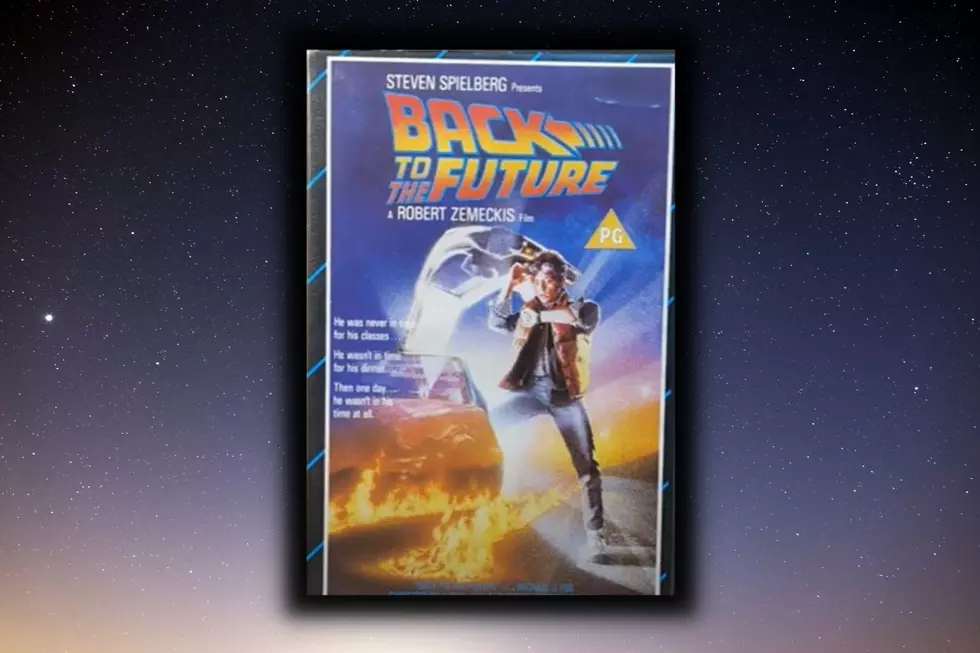
Nine Sci-Fi Movies Set in 2019: How They Predicted Our Present
The year 2019 is here and with it comes societal changes, emerging cultural views and breakthroughs in technology that we’ve never seen before. Or have we?
As it turns out, many sci-fi movies over the years are based in the year 2019. And while the majority of their predictions fell flat, there are several instances where script writers forecast the future accurately.
From the influential footprints of Blade Runner to the classic anime feature Akira, these films run the gamut stylistically. And while the movies vary in their views, one theme is consistent: All of them predicted 2019 to be bleak and dystopian. Nuclear war, human cloning and mankind on the brink of extinction are just some of the major plot points. With those positive vibes in mind, we take a look at nine movies' predictions for 2019.
Blade Runner (1982)
It’s been more than 35 years since Ridley Scott’s neo-noir sci-fi thriller came out. Despite lukewarm initial reception, the story of replicant hunter Rick Deckard (played by Harrison Ford) eventually earned cult status, scoring two Academy Award nominations and selection for preservation in the Library of Congress.
WHAT IT GOT RIGHT: While we still don’t have the robot replicants Blade Runner predicted, things aren't that far away. Researchers predict that one-third of the U.S. workforce will be manned by artificial intelligence by 2030. The rapid progression of AI in the workplace even prompted CNBC to call for the establishment of robot ethical rights.
Akira (1988)
This acclaimed anime predicted Tokyo would be destroyed by an atomic bomb, resulting in World War III. In 2019, 31 years after the nuking of the city, Kaneda, a bike-gang leader, tries to save his friend Tetsuo from a secret government project. Along the way he battles anti-government activists, greedy politicians, evil scientists and a powerful military leader. A final battle is fought in Tokyo Olympiad, exposing the experiment's secrets.
WHAT IT GOT RIGHT: The movie discusses the concept of melding man with machine, and while it focuses on the downside of such a pairing, we see the positive potential for this today in the real world. Thanks to modern technology, high-tech prosthetics are helping those with missing limbs, and the integration of AI is further aiding the advancement of this field. Also of note, the character Akira is awakened from beneath a stadium that's being constructed for the following year’s Olympic Games. Tokyo will actually host the Summer Olympics in 2020.
The Running Man (1987)
The U.S. is in a state of economic peril. To distract the public from these problems, the government creates a gladiatorial-style reality show where contestants battle for their freedom and their lives.
WHAT IT GOT RIGHT: A future where politics and entertainment are intertwined strikes surprisingly close to the current state of affairs. After all, a former reality star is in the White House. On a broader scale, the film accurately predicted the world’s obsession with reality shows, something unavoidable on TV these days. There’s also sweet irony that a movie with underlying tones regarding the government’s control includes two stars - Arnold Schwarzenegger and Jesse Ventura — who actually went on to careers in politics.
The Island (2005)
Michael Bay’s sci-fi thriller starred Ewan McGregor and Scarlett Johansson as two clones who, in 2019, discover the world they live in is actually a prison where they're being kept for organ harvesting.
WHAT IT GOT RIGHT: While the movie's concept seems extremely far-fetched, scientists have successfully cloned animals, so many people believe human cloning isn't too far away. As for organ harvesting, it's a lot more real than you may think.
Daybreakers (2009)
In 2019, a plague transforms most of the world’s population into vampires. Remaining humans are captured and farmed for blood, while others fight for survival and search for a cure. Ethan Hawke stars as a vampire hematologist.
WHAT IT GOT RIGHT: Hawke's character is trying to create a synthetic blood substitute that would allow humans and vampires to live together in peace. In the real world, research on synthetic blood has been going on for decades, with the goal being to limit society's dependence on blood donations during states of emergency, such as natural disasters.
The New Barbarians (1983)
This Italian sci-fi adventure takes place after World War III has decimated civilization. The story follows two heroes as they battle to protect survivors from a gang of leather-clad barbarians called the Templars.
WHAT IT GOT RIGHT: The planet hasn't become a barren wasteland full of violent vigilantes yet, as the movie predicts. Still, they did click on one part of the visual aesthetic: The costumes in The New Barbarians strike a startling similarity to the "Warrior Woman" look spotlighted on catwalks during fashion week.
Steel Frontier (1995)
In a post-apocalyptic 2019, the world has returned to a lawless, Old West-style frontier. As society tries to rebuild, a lone gunman battles desert outlaws who invade a town created by survivors of civilization's fall.
WHAT IT GOT RIGHT: If you think a western set after the devastation of nuclear war has very little connection to the real world, you're right. For the most part, Steel Frontier's depiction of 2019 is remarkably inaccurate when it comes to modern life. The only exception comes in the form of solar power. When the film's protagonist, a gunslinger named Yuma, needs to recharge his electric motorcycle, he does so by connecting it to a panel that harnesses the sun's rays. Solar-powered charging for electric vehicles has become a popular green alternative to fossil fuels in the past decade, as evident by the Tesla/Solarcity merger.
Heatseeker (1995)
The evil executive of a cyber-technology company kidnaps a champion kickboxer's fiancee to force him into the ring with a deadly cyborg opponent.
WHAT IT GOT RIGHT: While man-vs.-cyborg battles have yet to take place, robot-against-robot fights have been commonplace for years. Robot Wars, Battlebots, and the U.S.A. vs. Japan robot duals are some of the higher profile examples of this cultural phenomenon.
2019, After the Fall of New York (1983)
Another example where World War III's cataclysmic fallout has caused to world to become post-nuclear rubble. As radiation prevents humans from reproducing, two survivors are sent to the remnants of New York, where they square off against violent gangs to rescue the only fertile woman remaining on Earth.
WHAT IT GOT RIGHT: Not much. The movie "borrows" a lot from predecessors Escape From New York and Max Max, albeit on a much smaller budget. Its depiction of the world in 2019 isn't very original ... or accurate. Science has proven that radiation can affect fertility in both men and women, but giving the film credit for such a prediction would be a stretch.
More From KLUB Tejano 106.9


![If You Like Star Trek, You’ll Love Star Drunk [VIDEO]](http://townsquare.media/site/177/files/2013/10/hqdefault3.jpg?w=980&q=75)



![Plastic Surgeon Crafts Pointed Ears for Spock Fans [VIDEO]](http://townsquare.media/site/177/files/2011/04/plastic-surgeon-crafts-pointed-ears-for-spock-fans.jpg?w=980&q=75)
![Scariest Movies Filmed in Texas! [With Trailers]](http://townsquare.media/site/202/files/2022/10/attachment-Google-Maps.jpg?w=980&q=75)


